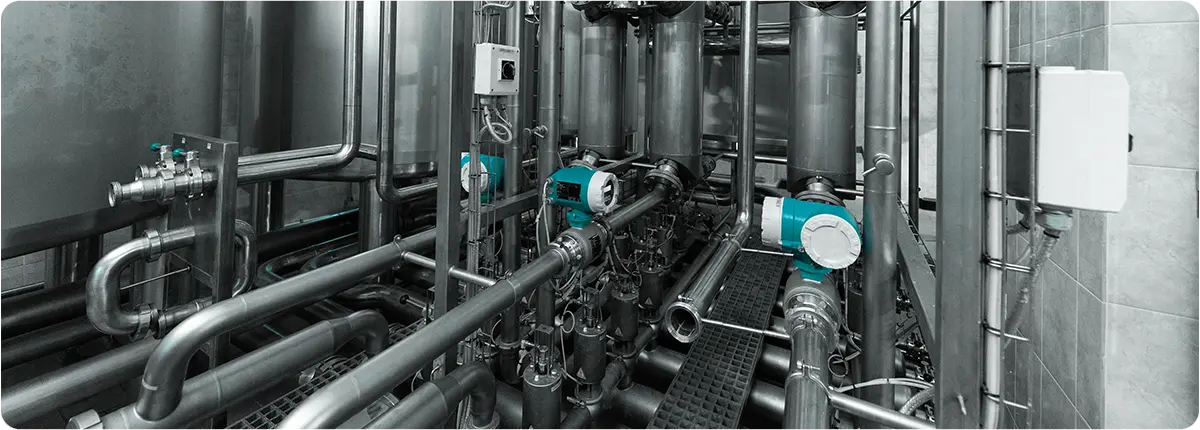Magnetic Flowmeters and Industrial Applications
Magnetic flowmeters, also known as electromagnetic flowmeters, are precision instruments based on Faraday’s law of electromagnetic induction. They are used to measure the flow velocity of conductive liquids and are widely applied in water, wastewater, chemical, food, pharmaceutical, and power industries.

WORKING PRINCIPLE
When a conductive liquid passes through a magnetic field, a voltage is induced, which is directly proportional to the fluid velocity. According to Faraday’s law:
E = B · d · v
Where E is the induced voltage, B is the magnetic flux density, d is the distance between electrodes, and v is the average fluid velocity.
The flow rate is then calculated as:
Q = v · A
Q: flow rate, v: velocity, A: pipe cross-sectional area.
STRUCTURAL FEATURES
- Measuring tube: stainless steel or lined with PTFE/rubber
- Electrodes: corrosion-resistant alloys (316SS, Hastelloy, titanium)
- Magnetic field: generated by coils
- Output: 4-20 mA, HART, Profibus, Modbus, digital displays
ADVANTAGES AND LIMITATIONS
Advantages:
- No moving parts, low maintenance
- High accuracy (0.2% – 0.5% error)
- No pressure loss
- Applicable to a wide range of pipe sizes
Limitations:
- Only works with conductive liquids (σ > 5 µS/cm)
- Not suitable for gases, oils, or low-conductivity fluids such as pure distilled water
APPLICATION AREAS
- Water and wastewater flow monitoring
- Chemical industry for acids, bases, and solution measurement
- Hygienic flow monitoring in food and beverage industry
- Pharmaceutical process flow control
- Cooling water monitoring in power plants
STANDARDS AND CALIBRATION
- ISO 6817: Standard for electromagnetic flowmeters
- OIML R 117: International standard for liquid measuring devices
- ATEX-certified versions: For explosive environments
- Regular calibration is essential to ensure accuracy
CONCLUSION
Magnetic flowmeters play a crucial role in modern industries by providing accuracy, reliability, and low maintenance for conductive liquid measurements. Their digital communication capabilities make them easy to integrate into automation systems for process optimization and control.
 Convalve
Convalve Convalve
Convalve